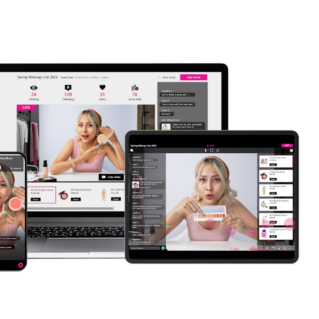When used properly, email may be more powerful than ever for growing a direct sales business.

Email marketing is dead, right? Far from it. More and more direct sellers are using email marketing to grow their businesses and build a following online. However, the focus is not on selling or promotion. They’re finding the most effective strategy is to bring value, educate and share compelling stories with their subscribers.
Top direct selling and network marketing industry trainer Ray Higdon says that email is still the No. 1 source of income for his coaching business. A 2017 study by Magnetic showed that 44 percent of North Americans check their email one to three times per day, while 18 percent check it four to nine times per day. Those aren’t surprising numbers considering most people can access their email anytime from
their smartphone.
“The 2018 survey conducted by adobe revealed that email was the preferred contact method for receiving offers from brands.”
According to a 2018 survey conducted by Adobe, personal email usage was up 17 percent over 2017 for people who owned smartphones and worked in an office. The survey also revealed that email was the preferred contact method for receiving offers from brands. 39 percent of respondents said the No. 1 thing they would change about brand emails is to make them more informative rather than promotional. 27 percent said that what they wanted most is for emails to be more personalized.
So, more informative and more personal. Sounds pretty simple, right? Those results are fantastic news for direct sellers who want to use email to grow their business and personal brand. They don’t have to be a seasoned salesperson to communicate with email subscribers effectively.
Direct Selling Email Strategies that Work
Email is a terrific way for direct sellers to maintain consistent communication with their customers, prospects and fellow team members. Communicating with hundreds or thousands of people with the push of a button is powerful. Email allows direct sellers to build a loyal following that looks to them as a trusted authority. The key is to communicate value.
 Emails that constantly try to sell often get lost in the noise. Providing value means educating, answering questions, solving problems and telling compelling stories. As the Adobe survey revealed, it means being informative.
Emails that constantly try to sell often get lost in the noise. Providing value means educating, answering questions, solving problems and telling compelling stories. As the Adobe survey revealed, it means being informative.
In his book Jab, Jab, Jab Right Hook: How to Tell Your Story in a Noisy Social World, online business-building expert Gary Vaynerchuk says that content is most effective when it brings value. “A story is at its best when it’s not intrusive when it brings value to a platform’s consumers, and when it fits in as a natural step along the customer’s path to making a purchase,” he says.
The title of Vaynerchuk’s book sums up this philosophy. The “Jabs” are the bits of valuable content you provide your customers. The “Right Hook” is when you ask for something, such as a sale or an invitation to view the business opportunity. His point is to have more jabs before you ever go in for the right hook. There’s no universal jab-to-right-hook ratio, but the approach applies perfectly to direct selling email strategies.
For example, someone in the health or weight loss industry might email five tips on how to avoid late-night sugar cravings or an email about their favorite high-fiber foods. If the email subscribers have questions about these things or need help in these areas, it opens up a nearly endless amount of valuable content topics. Then, an email might be sent about the specific product the person used to help lose 20 pounds. A genuine success story can be built around the results of the product. The audience is much more likely to listen and pay attention because they have already been given so much value and helpful advice.
“Emails that constantly try to sell often get lost in the noise. Providing value means educating, answering questions, solving problems and telling compelling stories.”
The focus on genuinely helping and serving is what makes the transition to selling (or asking) simple and natural. Many seasoned direct selling leaders espouse writing emails in a personal, natural tone as if you were simply writing a letter to a friend. Some do not even include images in their emails, and others rarely include more than one link, which can be seen as “salesy” if done too often.
Tracking Results
Another major benefit of email marketing for direct sellers is the ability to track results such as open rates and click rates. Emails can drive people to an informative blog post, educational or entertaining YouTube video, a training webinar, a Facebook Live interview, or an exclusive discount on a replicated website. Knowing who opened an email or clicked on a link reveals valuable data for direct sellers. Follow-up emails can focus on only those who opened the previous email, helping narrow the target audience.
Another major benefit of tracking results is separating subscribers based on interest. Some subscribers might only be interested in being a customer at first, while others might be interested in the business opportunity. Identifying the differences helps tremendously in getting the right message to the right audience, and at the right time.



